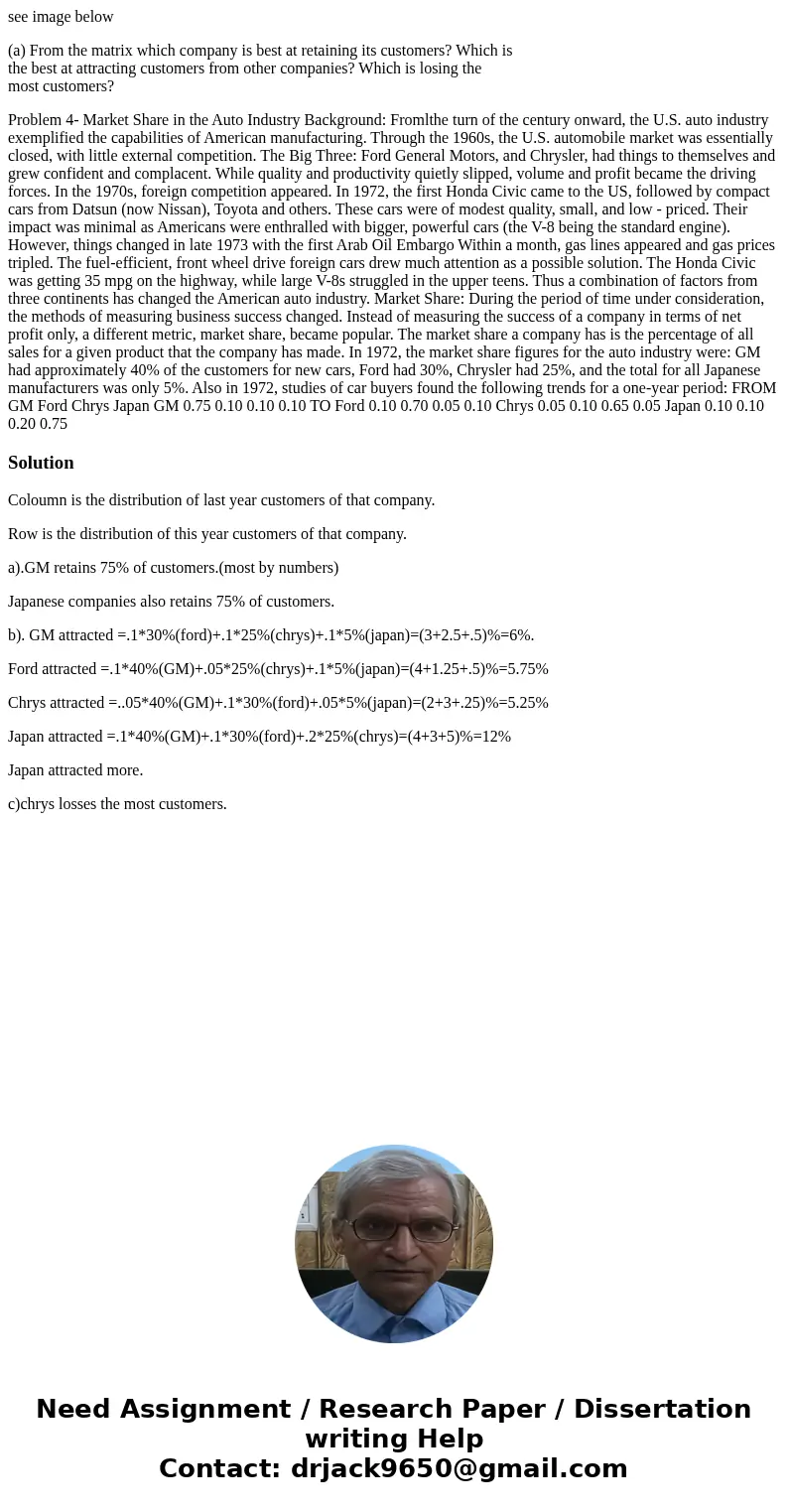see image below
(a) From the matrix which company is best at retaining its customers? Which is
the best at attracting customers from other companies? Which is losing the
most customers?
Problem 4- Market Share in the Auto Industry Background: Fromlthe turn of the century onward, the U.S. auto industry exemplified the capabilities of American manufacturing. Through the 1960s, the U.S. automobile market was essentially closed, with little external competition. The Big Three: Ford General Motors, and Chrysler, had things to themselves and grew confident and complacent. While quality and productivity quietly slipped, volume and profit became the driving forces. In the 1970s, foreign competition appeared. In 1972, the first Honda Civic came to the US, followed by compact cars from Datsun (now Nissan), Toyota and others. These cars were of modest quality, small, and low - priced. Their impact was minimal as Americans were enthralled with bigger, powerful cars (the V-8 being the standard engine). However, things changed in late 1973 with the first Arab Oil Embargo Within a month, gas lines appeared and gas prices tripled. The fuel-efficient, front wheel drive foreign cars drew much attention as a possible solution. The Honda Civic was getting 35 mpg on the highway, while large V-8s struggled in the upper teens. Thus a combination of factors from three continents has changed the American auto industry. Market Share: During the period of time under consideration, the methods of measuring business success changed. Instead of measuring the success of a company in terms of net profit only, a different metric, market share, became popular. The market share a company has is the percentage of all sales for a given product that the company has made. In 1972, the market share figures for the auto industry were: GM had approximately 40% of the customers for new cars, Ford had 30%, Chrysler had 25%, and the total for all Japanese manufacturers was only 5%. Also in 1972, studies of car buyers found the following trends for a one-year period: FROM GM Ford Chrys Japan GM 0.75 0.10 0.10 0.10 TO Ford 0.10 0.70 0.05 0.10 Chrys 0.05 0.10 0.65 0.05 Japan 0.10 0.10 0.20 0.75
Coloumn is the distribution of last year customers of that company.
Row is the distribution of this year customers of that company.
a).GM retains 75% of customers.(most by numbers)
Japanese companies also retains 75% of customers.
b). GM attracted =.1*30%(ford)+.1*25%(chrys)+.1*5%(japan)=(3+2.5+.5)%=6%.
Ford attracted =.1*40%(GM)+.05*25%(chrys)+.1*5%(japan)=(4+1.25+.5)%=5.75%
Chrys attracted =..05*40%(GM)+.1*30%(ford)+.05*5%(japan)=(2+3+.25)%=5.25%
Japan attracted =.1*40%(GM)+.1*30%(ford)+.2*25%(chrys)=(4+3+5)%=12%
Japan attracted more.
c)chrys losses the most customers.

 Homework Sourse
Homework Sourse